Comments / Questions (65)
![]() Mary Kay Stephens wrote:
Mary Kay Stephens wrote:
The cuff of the pattern says 13 sc. But the picture shows a folded down cuff. Will the pattern work if I double the 13 sc.?
07.01.2025 - 23:24DROPS Design answered:
Dear Mrs Stephens, you can work more sc if you need, but maybe first check this video where we show how to work these slippers (the 13 sts should be enough if your tension is right). Happy crocheting!
08.01.2025 - 07:20
![]() Denise wrote:
Denise wrote:
I just wanted to say..I love this pattern and have made 12-15 pairs... I attach the boot to flip flop soles... Everyone loves them.. With that being said... I haven't made myself a pair.. THANK YOU VERY MUCH
31.10.2021 - 23:18
![]() Melinda wrote:
Melinda wrote:
Hello If you watch the video the decreased stitch happened at the beginning and the middle there isn't a decrease at the end of the row. So please help ne
06.01.2021 - 19:02DROPS Design answered:
Dear Melinda, my mistake sorry, you decrease 2 sts but the first one at the beg of the row = time code 7:37 and 2nd decrease is in the middle of the row = time code 8:20 = there are now 29-31-33 sts on row. Happy crocheting!
07.01.2021 - 10:04
![]() Melinda wrote:
Melinda wrote:
Hello, I am having issues on the slipper part of the pattern, it confuses me where the drop a stitch part at 6 inches but it doesn't say to keep dropping a stitch on each row after or just that one row please help. Thank you
05.01.2021 - 17:45DROPS Design answered:
Dear Melinda, there is only 1 decrease row (decreasing 2 sts, 1 at the beg of the row +1 at the end of the row), then continue as before - see also that video (decrease row = 7:37). Happy crocheting!
06.01.2021 - 07:16
![]() Anne wrote:
Anne wrote:
BONJOUR Je viens de decouvrir votre tuto de chaussons merci c'est super bien expliqué aussi je vais m'empressée de les faire merci encore
23.12.2020 - 04:18
![]() Daniela wrote:
Daniela wrote:
Hallo, ich würde gerne wissen, ob die Zunahme nach 15 cm inklusive oder ohne Bund gerechnet wird. Ich habe auch Probleme, die 33 Maschen im Bund gleichmäßig zu verteilen, da ich ca. 28 Reihen erhalte. Vielen Dank!
07.12.2020 - 15:30DROPS Design answered:
Liebe Daniela, die 15 cm sind inklusive den Bund gemessen (siehe dieses Video, time code 7:17. Bei 4:39 schauen Sie, wie wir die Maschen häkeln - wenn Sie 28 Reihen haben, dann häkeln Sie 2 Maschen in 1 Maschen 5 Mal regelmäßig verteilt (= wie bei einer Zunahme) so haben Sie 33 M. Viel Spaß beim häkeln!
07.12.2020 - 16:04
![]() Cristina wrote:
Cristina wrote:
A partir de quince centímetros de pantufla se hacen dos disminiciones en la fila del punto alto. ¿Esto se repite en cada fila de punto alto hasta llegar a los 26 cm o soli en la primera? Gracias.
23.11.2020 - 20:02DROPS Design answered:
Hola Cristina! Mira el video Cómo elaborar las pantuflas en DROPS Extra 0-888 AQUI. Buen trabajo!
24.11.2020 - 13:59
![]() Faucher wrote:
Faucher wrote:
Votre vidéo as pas de son
13.11.2020 - 00:15DROPS Design answered:
Bonjour Mme Faucher, Nos vidéos sont effectivement muettes. Nous sommes une compagnie active au niveau mondial et nos vidéos sont regardées par des internautes du monde entier, parlant des langues différentes, dont beaucoup ne comprennent pas le français. Nous avons par conséquent opté pour des explications écrites pour accompagner chaque vidéo, et il n'y a pas de son pour perturber pendant que vous regardez la vidéo. Bonne visualisation !
13.11.2020 - 08:24
![]() Edith wrote:
Edith wrote:
Avez-vous un patron pour une nappe rectangulaire au crochet ? Merci
04.01.2020 - 13:39DROPS Design answered:
Bonjour Edith, nous n'avons pas encore de modèle de nappe, vous pourrez toutefois trouver l'inspiration parmi tous nos napperons. Bon crochet!
06.01.2020 - 07:48
![]() Campan wrote:
Campan wrote:
Bonjour je ne comprends pas ce que veut dire ms et ml merci pour votre explication
18.09.2019 - 08:08DROPS Design answered:
Bonjour Mme Campan, 1 ms = 1 maille serrée ; 1 ml = 1 maille en l'air; 1 mc = 1 maille coulée et 1 B = 1 bride. Bon crochet!
18.09.2019 - 10:12
Lucky Wanderer |
|
|
|
|
Crochet DROPS Boots in Snow
DROPS Extra 0-888 |
|
|
CROCHET INFO: Start every row with sc with 1 ch. CROCHET 2 STS TOG: Crochet the first st but wait with last YO and pull through, crochet next st and at last pull trough now pull yarn through all 3 loops on hook. CUFF Worked sideways. With 1 strand dark gray Snow ch 13 loosely. Work 1 sc in 2nd ch from hook, then work 1 sc in every ch the entire row = 12 sc. Work back and forth with sc in the back loops of the sts for 10½-11-11½ inches. Fasten off. SLIPPER: Worked top down, back and forth with the opening in the back of leg. With 1 strand ligh gray Snow and 1 strand Alpaca Bouclé held together work 31-33-35 sc evenly along one side of cuff. Continue to work as follows: * ch 2, turn piece, work 1 dc in every st on row, ch 1, turn piece, work 1 sc in every st on row *, repeat from *-*. AT THE SAME TIME when piece measures a total of 6 inches dec 2 sts on next row as follows: Work the first 2 sts tog - see explanation above - and at mid front work 2 sts tog = 29-31-33 sts on row. Continue as before until piece measures 10-11-12 inches. Now work the foot as follows – insert a marker in the middle st on row: ROW 1: Work 1 sc in every st until st before mid st, 2 sc in next st, 1 ch (= middle st), skip next st, 2 sc in next st, 1 sc in each of the last sts, turn piece. ROW 2: Work 1 sc in each of the first sts until the ch, work 7 dc in the middle ch (the 4th dc of the 7 dc is now the middle st) and 1 sc in each of the last sts, turn piece. ROW 3: Work 1 sc in each of the next sts until st before mid st, work 2 sc in next st, 1 ch (= mid st), skip next st, work 2 sc in next st, 1 sc in each of the last sts, turn piece. ROW 4: Work 1 sc in each st until mid st, 7 dc in ch and 1 sc in each of the last sts, turn piece. Repeat 3rd and 4th row until piece measures approx. 9"-10"-11" measured in foot length - measure the piece is folded double. Switch to 1 strand dark gray Snow and now measure piece from here. * Work 1 row with sc, finish row with 1 ch and turn piece *, repeat from *-* until piece measures approx. 1½-1 3/4-2 inches. Work one more row where you work the first 2 and the last 2 sts tog. Fasten off. ASSEMBLY: Fold the boot double, sew tog under foot and up along back of leg leg. Sew edge to edge to avoid a chunky seam. POM-POM TIES Work a ch-row with dark gray Snow of approx. 60''. Make small pompoms to fasten in each end – Tip: Before the second pompom is attached to the ch-row, pull the tie through a st at the bottom of leg in the back, in the transition between light gray and dark gray Snow, so it is fastened. Tie around the leg. |
|
Have you finished this pattern?Tag your pictures with #dropspattern or submit them to the #dropsfan gallery. Do you need help with this pattern?You'll find 9 tutorial videos, a Comments/Questions area and more by visiting the pattern on garnstudio.com. © 1982-2025 DROPS Design A/S. We reserve all rights. This document, including all its sub-sections, has copyrights. Read more about what you can do with our patterns at the bottom of each pattern on our site. |







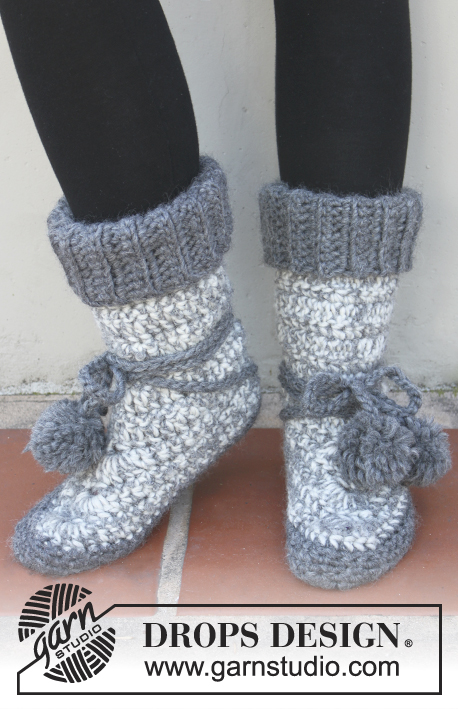
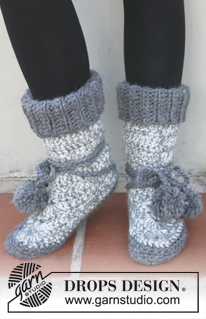






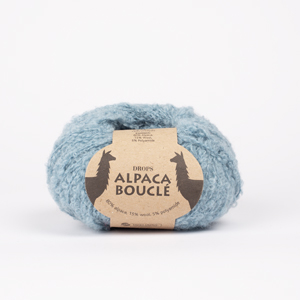
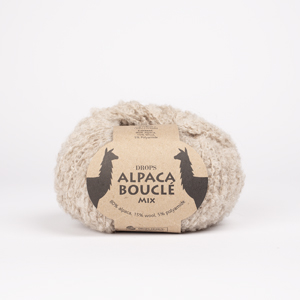




















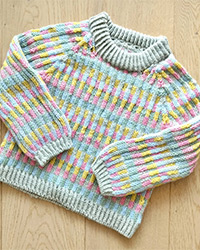
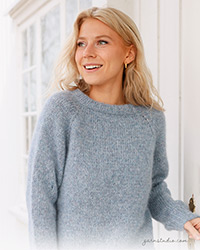


Post a comment to pattern DROPS Extra 0-888
We would love to hear what you have to say about this pattern!
If you want to leave a question, please make sure you select the correct category in the form below, to speed up the answering process. Required fields are marked *.